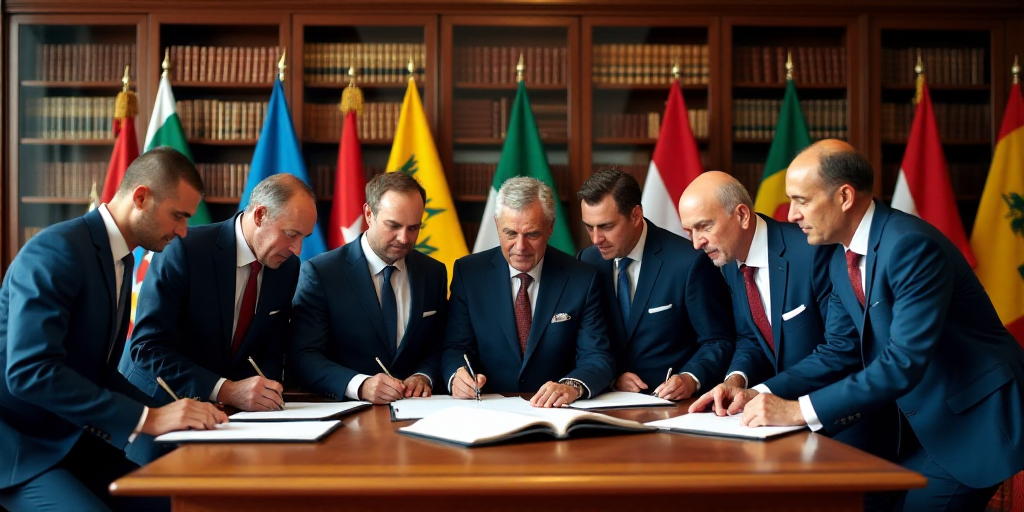Background on Mercosur and EFTA
Mercosur, a South American trade bloc comprising Argentina, Brazil, Paraguay, and Uruguay, has signed a Free Trade Agreement (FTA) with the European Free Trade Association (EFTA). EFTA consists of four non-EU European countries: Islandia, Liechtenstein, Noruega, and Suiza.
Key Players
The Argentine Minister of Foreign Relations, Commerce International, and Culture, Gerardo Werthein, along with his Brazilian counterpart Mauro Vieira, Uruguayan Minister Mario Lubetkin, and Paraguayan Vice-Minister of Economic Relations and Integration Patricia Frutos, participated in the signing ceremony. Representing EFTA were Swiss Vice President Guy Parmelin, Icelandic Minister of Culture, Innovation and Higher Education Logi Már Einarsson, Norwegian Minister of Trade and Industry Cecilie Myrseth, and Liechtenstein’s Ambassador Frank Buechel.
Agreement Details
After nearly a decade of negotiations, the FTA aims to create a free trade zone encompassing nearly 300 million consumers and a combined GDP of approximately $4.3 trillion.
- The agreement covers trade in goods and services, investments, intellectual property, public procurement, competition, rules of origin, trade defense, sanitary and phytosanitary measures, technical barriers to trade, legal matters, and dispute resolution.
- A dedicated chapter on trade and sustainable development is also included.
Benefits and Impact
The FTA is expected to positively impact 97% of the exports from both blocs, leading to increased bilateral trade and benefits for businesses and individuals. It will provide greater market access and modernized customs regulations, enhancing legal predictability and certainty in trade for economic agents from both Mercosur and EFTA countries.
Implementation and Timeline
Although the FTA marks significant progress, its implementation will not be immediate. The agreement’s entry into force hinges on parliamentary approval in each country, a process that may extend until 2026 according to diplomatic sources.
Short-term Expectations
In the short term, the goal is to surpass 2024 trade levels where Mercosur exported $3.373 billion to EFTA and imported $3.824 billion worth of products, with Switzerland being the primary trading partner.
Key Questions and Answers
- What is Mercosur? Mercosur is a South American trade bloc consisting of Argentina, Brazil, Paraguay, and Uruguay.
- What is EFTA? EFTA is an association of four European countries (Islandia, Liechtenstein, Noruega, and Suiza) that are not part of the European Union.
- What does the FTA cover? The agreement covers trade in goods and services, investments, intellectual property, public procurement, competition, rules of origin, trade defense, sanitary and phytosanitary measures, technical barriers to trade, legal matters, dispute resolution, and sustainable development.
- When will the FTA take effect? The FTA’s entry into force depends on parliamentary approval in each country, with the process potentially extending until 2026.
- What are the short-term trade expectations? Mercosur aims to surpass 2024 trade levels, with exports to EFTA at $3.373 billion and imports at $3.824 billion, focusing on strengthening ties with Switzerland.






